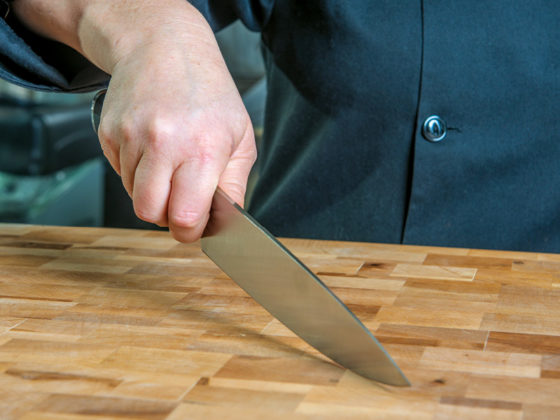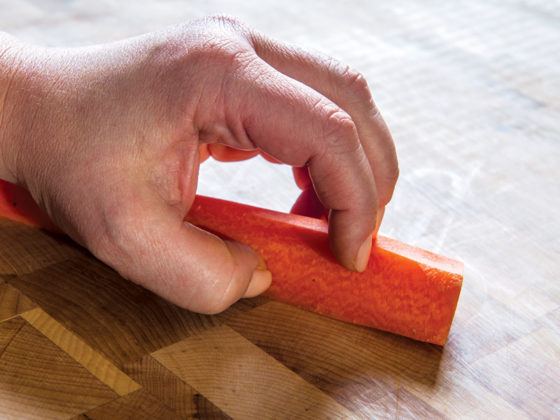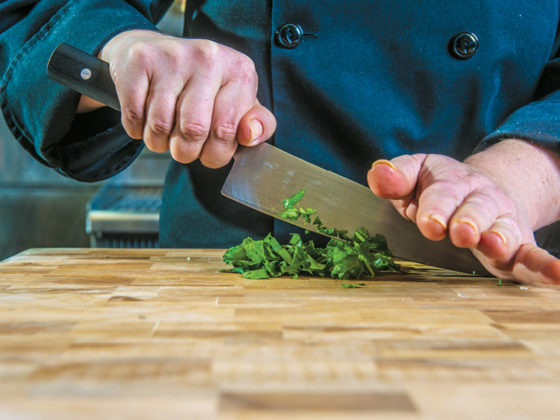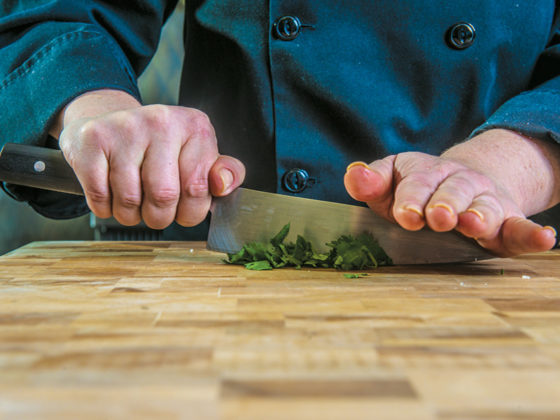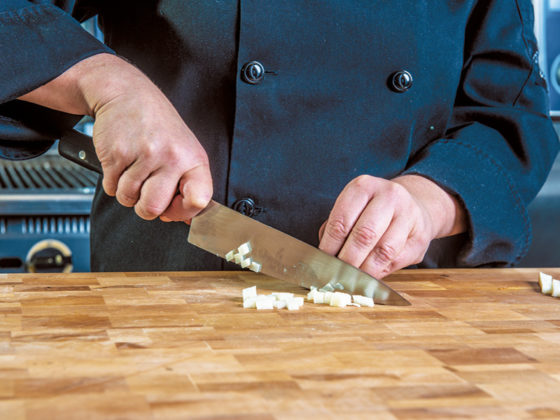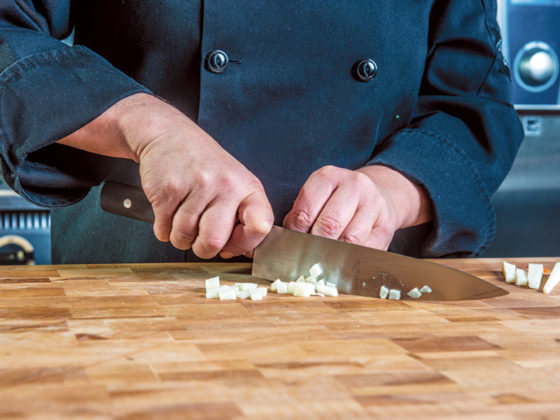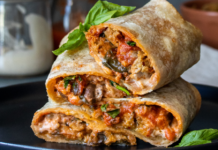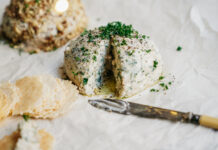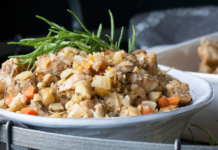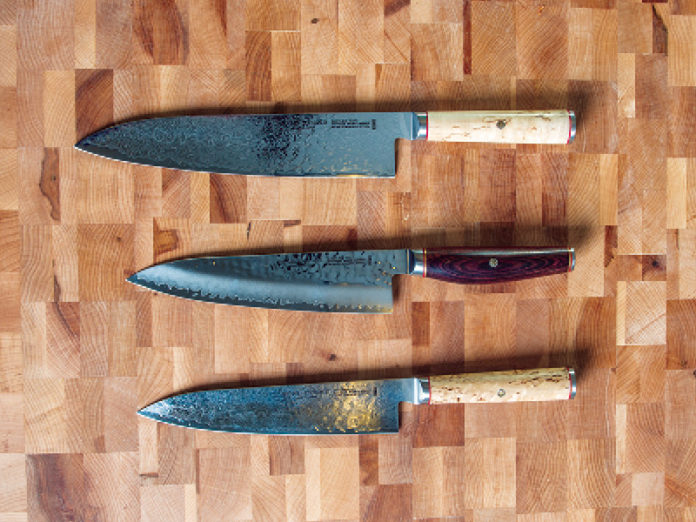
Using a knife properly can be intimidating, but the more you practice, the more confident you become and the more power you have to create healthful, fresh food.
Chopping fresh food is a skill that needs to be learned to help you have control over what goes into your body.
When you are comfortable with your knife, time in the kitchen becomes pleasurable, good food becomes available and health improves. While there are many basic cooking skills to learn to make cooking something you can fit into your daily routine, getting right with your knife is the first step on your journey.
Cooking is the doorway to health. And picking up a knife is the key. Here’s what you need to know about selecting and using your knife.
Essential Knives
It is not necessary to have a drawer full of knives. A chef’s knife, a paring knife and a serrated bread knife can perform most tasks in the kitchen. Many people find that an 8-inch blade is easiest to manipulate, while others prefer 10. Some people like more delicate Japanese blades, while others prefer heartier German or American styles. Test-drive a variety of knives to see which is the most comfortable for you.
Selecting and Caring for Your Chef’s Knife
A knife is an extension of your body and is a very individualized purchase. Here’s what to look for at the knife store:
German Blades
- Rugged, thicker blade; easy to sharpen
- Holds edge well

Japanese Blades
- Lighter, more delicate
- Great for very fine cuts
- Extremely sharp

Blade Length
The length of blade you choose will depend on your cooking needs and what feels comfortable to you. A 10-inch blade is average for a chef’s knife and suitable for breaking down both plants and proteins, but 8-inch or 12-inch knives are common in kitchens, as well.
Handle
A chef’s knife should feel balanced when you hold it and the grip should feel very comfortable in your hand. High quality knives will have the steel running all the way into the handle.
Caring for Your Knife
- Never put your chef’s knife in the dishwasher. Clean immediately after use by hand. Abrasive cleaners and dishwasher soap can damage the blade.
- Sharpen your knife once a week.
- Hone your knife before every use.
- Use a knife protector to keep your blade sharp and safely stored.
- Have your chef’s knife sharpened professionally once a year.
Accessories for Your Knife Kit
- Knife protector
- Honing rod (steel or ceramic)
- Sharpener
- Paring knife
- Serrated bread knife
Wood or plastic cutting board (glass boards dull the knife). Placing a damp cloth under your cutting board for a slip-free work surface that will help keep you safe.
Holding a Knife
Grasp your knife near the bolster of the blade, where the blade and handle meet. Place your thumb on one side of the blade and your index finger on the other, as if they could touch if there were a hole in the knife. The other fingers relax and gently hook underneath the handle. Stay relaxed. Do not place your index finger on top of the blade. This makes cutting less stable and strains your hand and arm.
Holding Your Food
Fingertips need to stay out of the way when cutting. Make the shape of the letter “e” with your guide (food holding) hand, curling your fingers under your knuckles. Maintain this shape as you hold the food. Your thumb and pinky guide the food forward as you cut. Gently resting the side of the blade on the knuckles of your guide hand helps you understand where the blade is in relation to your fingers. With time and practice, this position will become natural.
Chopping Herbs and Smaller Items
Many items benefit from pivoting your knife through them as you chop. Secure the tip of the knife with the palm of your guide hand, and make up and down motions with the rest of the knife as it pivots through the food, in the shape of a fan.
Chopping Average Sized, Harder Items
Make sure the tip of your knife maintains contact with the cutting surface as you move the blade in a circular motion, like the wheels on a train. As you move your hand forward, the blade chops down and through the food. Practice on easy-to-cut items such as celery or carrots.


